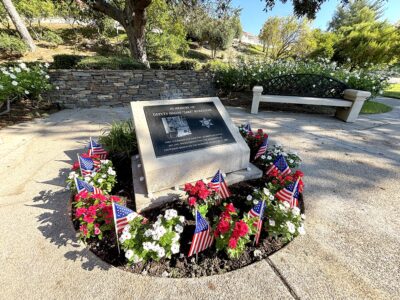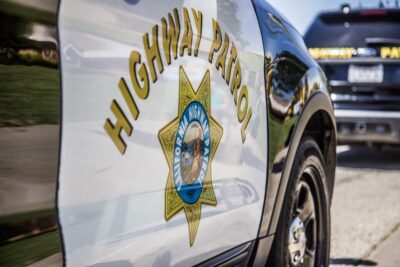By Alicia Doyle
Sunday Signal Writer
Santa Clarita boasts a rich tapestry of historical landmarks that reflect its vibrant past.
The Santa Clarita History Center, home to the Edison house, Kingsbury House, Little Red Schoolhouse, Ramona Chapel and Mogul Locomotive, is one of several historical sites that offer visitors a unique journey through California history shaped by frontier pioneers, movie legends and innovations that fueled the Golden State’s growth.
The Santa Clarita History Center, formerly known as Heritage Junction Historic Park, is located at 24101 Newhall Avenue in Newhall within William S. Hart Park, which is now run by the city. The Santa Clarita Historical Society is headquartered at the history center. The center offers visitors an opportunity to step back in time.
Here is some information about just a few of the nine historical locations.
Edison House
The Edison House was one of several cottages built in the 1920s along present-day Magic Mountain Parkway for operators of Southern California Edison’s Saugus substation. Some of the cottages were destroyed in the 1928 St. Francis Dam disaster. Three were repaired in 1928; nine were rebuilt in 1929.
According to the historical marker, the Edison House is probably one of the 1929 replacements ordered from a “kit home” supplier such as Sears Roebuck or Montgomery Ward. During World War II, artillery guns were placed around the employee cottages. In 1972, Edison sold the property, including buildings, to Newhall Land. All but this one were destroyed in a fire department exercise. The cottage was donated to the Historical Society and moved to Hart Park on January 18 of 1989.

Kingsburry House
At least eight other markers are within walking distance of the Edison House, including the Kingsburry House, built in 1878 at the southwest corner of today’s Market and Main streets for J.O. Newhall, operator of the Southern Hotel, making it the oldest existing Newhall house.
The house was donated to the Historical Society in 1987.
Charles and Ruth Kingsburry purchased the house in 1911 and a small addition was added for Masonic activities. They were active in the Masons, Eastern Star and Presbyterian Church.
You may have seen references to the Kingsbury House, with one “r.” According to SCVhistory.com, in 2012, local historian Pat Saletore came upon a World War I registration card signed in the man’s own hand. For the record, the name is Kingsburry.
Little Red Schoolhouse
The Little Red Schoolhouse is representative of the type of small school used in mining camps and frontier settlements in the late 1800s. It was obtained in the 1920s by Robert E. Callahan, a collector of Western memorabilia who operated the Mission Village auto park in Culver City.
The schoolhouse was located at Callahan’s Old West Trading Post at 13660 Sierra Highway. It was moved to its permanent location in 1987 along with the Ramona Chapel.
Ramona Chapel
The Ramona Chapel is a small, historic wooden chapel built in the 1920s for Robert E. Callahan’s Mission Village. The chapel was constructed from salvaged parts and pieces of older churches. It was inspired by Helen Hunt Jackson’s 1884 novel “Ramona,” and serves as a physical homage to the romanticized Southwest depicted in her work.
In 1987, the chapel was relocated from the Old West theme site in Agua Dulce to its current location in Hart Park to preserve it as a part of local history. The building features Western and Native American motifs and contains eight two-seat pews. Over time, the chapel underwent restoration work to maintain its historical appearance, including re-roofing with custom-colored metal shingles in 2019 to keep it weather-tight while preserving its traditional look.
Mogul Locomotive
Also nearby is a Mogul Locomotive, which was donated to the Historical Society by Gene Autry in 1981. This 75-ton Mogul 2-6-0 steam locomotive was built in 1900 by Schenectady Locomotive Works of New York. The Southern Pacific Railroad used it on its Yuma-to-Portland line, which passed through the Santa Clarita Valley.
The locomotive ran in Mexico in 1946 and spent its final years in the Southern Pacific’s Tucson division. Autry bought it out of retirement in 1957 for Melody Ranch, which he planned to turn into a Western museum.
A 1962 wildfire thwarted his plans. Of 355 Moguls built, only seven survive.
Saugus Train Station
The Saugus Train Station, which just reopened since the pandemic, is considered a significant historic landmark with roots stretching back to the end of the 19th century.
Completed by the Southern Pacific Railroad, the station officially opened on September 1 of 1887, soon after the golden spike was driven at Lang, connecting Los Angeles to San Francisco and, ultimately, the national rail network. The Saugus station became a pivotal junction where the Santa Paula Branch Line met other major Southern Pacific lines, providing connections to the coast, Mojave and Los Angeles.
The Saugus station witnessed significant historical events, most famously the 1929 Saugus Train Robbery. Over the decades, it was witness to the region’s transformation from a rural agricultural area to a bustling suburb. As passenger rail declined in the late 20th century, the station ceased providing passenger service on April 30, 1971, with the discontinuation of the San Joaquin Daylight line. Southern Pacific ended all operations in 1979, leaving the future of the building uncertain.
Preservation efforts led by local pioneers, including the Santa Clarita Valley Historical Society, saved the historic depot from demolition. In 1980, the building was relocated to William S. Hart Park in Newhall, where it became a museum and a focal point for local history education. The station has since undergone restoration, with the recent reopening featuring displays of authentic equipment and artifacts, and even original Southern Pacific paint colors carefully matched to the era between 1917 and 1958. The depot is now a key part of the History Center, reflecting not only railroad heritage but also the growth of Santa Clarita Valley.
The historical significance of the Saugus Train Station is underlined by its appearances in movies and television — such as the Frank Sinatra film “Suddenly” — its collection of rare Southern Pacific baggage carts, and the efforts by the community to preserve rail heritage for future generations.








